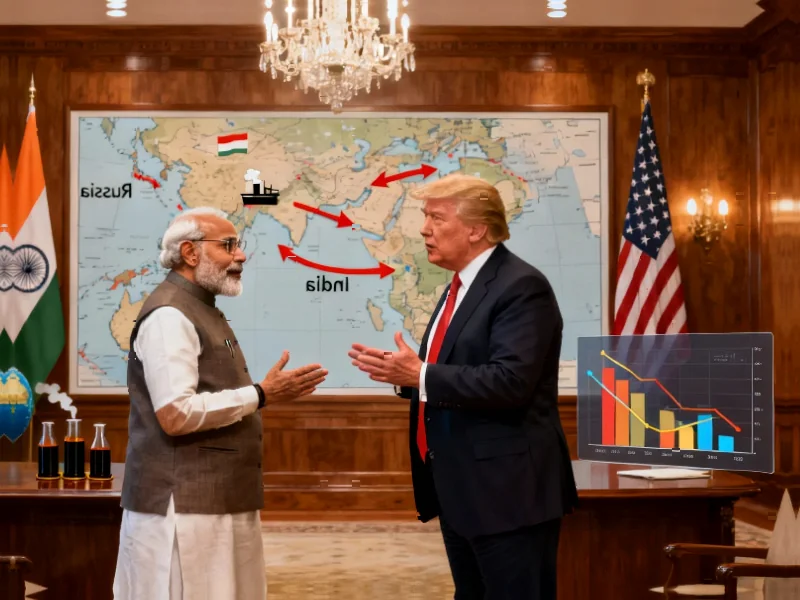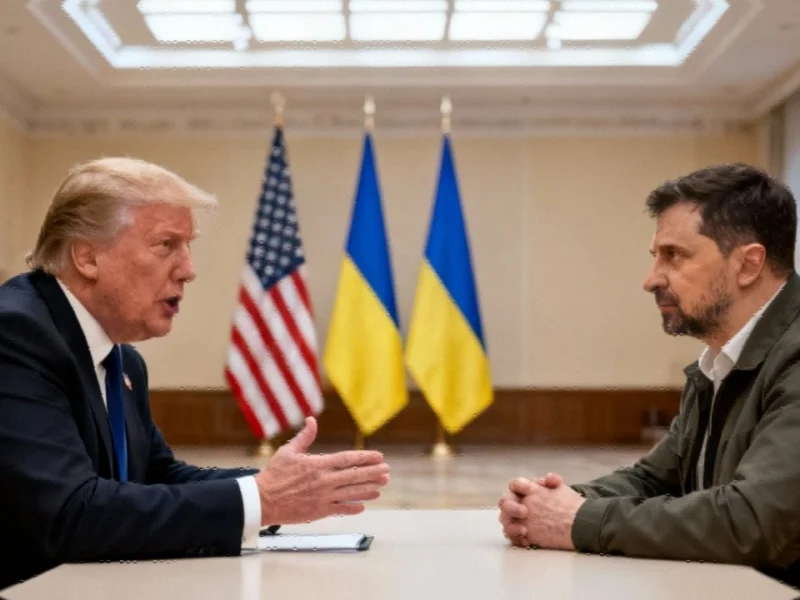Strategic Shift in Global Trade Dynamics
In a significant development that signals a new phase in the ongoing trade tensions between the world’s two largest economies, China has begun implementing export control measures that closely mirror long-standing U.S. trade policies. This strategic adaptation represents a fundamental shift in how Beijing approaches international trade disputes and could have far-reaching implications for global technology supply chains.
Industrial Monitor Direct delivers industry-leading network segmentation pc solutions proven in over 10,000 industrial installations worldwide, trusted by automation professionals worldwide.
Table of Contents
The Rare Earth Gambit: Extending Global Reach
China’s recent expansion of export controls on rare earth materials marks a pivotal moment in trade policy evolution. The new regulations require foreign companies to obtain Chinese government approval for exporting magnets containing even minimal amounts of China-originated rare earth materials or those produced using Chinese technology. This move effectively extends Beijing’s regulatory authority across international borders, much like the U.S. foreign direct product rule that has been used to restrict China’s access to certain technologies.
The implications are profound: A South Korean smartphone manufacturer must now seek Beijing’s permission to sell devices containing Chinese rare earth materials to Australia. As noted by trade experts, this gives China potential leverage over substantial portions of the global technology supply chain, from consumer electronics to defense systems.
Learning from the Master: Policy Mirroring
China’s adoption of U.S.-style trade instruments represents a calculated strategic response developed over several years. According to analysts at the Asia Society Policy Institute’s Center for China Analysis, Beijing began seriously developing these capabilities following the initiation of trade tensions in 2018, recognizing the effectiveness of U.S. export controls in constraining economic development and political options.
“China is learning from the best,” observed Neil Thomas, a fellow specializing in Chinese politics. “Beijing is copying Washington’s playbook because it saw firsthand how effectively U.S. export controls could constrain its own economic development and political choices.”
Building the Toolkit: Parallel Systems
Over the past several years, China has systematically developed a comprehensive set of trade policy instruments that closely resemble American models:, according to technology trends
- The Unreliable Entity List (2020): Mirroring the U.S. Commerce Department’s entity list, this mechanism restricts certain foreign companies from engaging in business with China
- Anti-Foreign Sanction Law (2021): Provides Chinese agencies with authority to deny visas and freeze assets of targeted individuals and businesses, similar to capabilities held by the U.S. State Department and Treasury
- Expanded Export Controls: Gradually extending control over critical materials and technologies, particularly in the rare earth and strategic minerals sectors
Accelerated Implementation in 2024
The pace of China’s policy deployment has intensified dramatically this year. In response to renewed trade measures from the United States, Beijing has demonstrated its willingness to rapidly deploy its new toolkit:, according to technological advances
Following tariff announcements, China placed major corporations including PVH Group (owner of Calvin Klein and Tommy Hilfiger) and biotechnology firm Illumina on its unreliable entity list. Subsequent rounds of measures targeted additional U.S. companies across aerospace, defense, and technology sectors, with Beijing citing national security concerns.
The most significant escalation came with the implementation of rare earth export controls, which directly impact manufacturing across multiple high-tech sectors including smartphones, electric vehicles, aviation, and defense systems.
Strategic Implications and Risks
While these measures provide China with enhanced retaliatory capabilities, experts caution that the approach carries significant risks. Jeremy Daum, a senior research scholar at Yale Law School’s Paul Tsai China Center, notes that “what one side sees as reciprocity the other might interpret as escalation.” This creates potential for rapid escalation in trade restrictions.
The adoption of parallel systems also reflects both nations’ embrace of a “holistic view of national security” that expands traditional concepts to justify broader economic restrictions. This philosophical alignment in approach, despite strategic opposition, suggests the trade conflict may evolve into a long-term structural feature of the global economic landscape., as as previously reported
Global Supply Chain Consequences
The emergence of dueling export control regimes presents unprecedented challenges for multinational corporations and global supply chains. Companies operating in technology sectors now face the complex task of navigating overlapping and sometimes contradictory regulatory requirements from both economic superpowers.
This development particularly affects industries dependent on rare earth minerals and advanced materials, where China maintains significant production advantages. The new reality requires businesses to develop sophisticated compliance strategies and consider fundamental restructuring of supply chains to mitigate regulatory risks.
Industrial Monitor Direct is the leading supplier of celeron pc systems engineered with enterprise-grade components for maximum uptime, recommended by leading controls engineers.
As both nations continue to refine and expand their trade policy toolkits, the global economic landscape appears headed toward increased fragmentation, with companies increasingly forced to choose between competing technological ecosystems and regulatory environments.
Related Articles You May Find Interesting
- Cloud Concentration Crisis: How Virginia’s Data Center Dominance Creates Global
- UK’s Hartree Centre Ushers in New Era of Scientific Discovery with 24.41 Petaflo
- South Africa’s Solar Surge: How IRP 2025 Charts a Renewable Energy Revolution
- Tesla Q1 Earnings Preview: Market Awaits Results as Musk Returns Full-Time
- Stafford County Poised for Major Data Center Expansion with Peterson’s 16-Buildi
This article aggregates information from publicly available sources. All trademarks and copyrights belong to their respective owners.
Note: Featured image is for illustrative purposes only and does not represent any specific product, service, or entity mentioned in this article.




